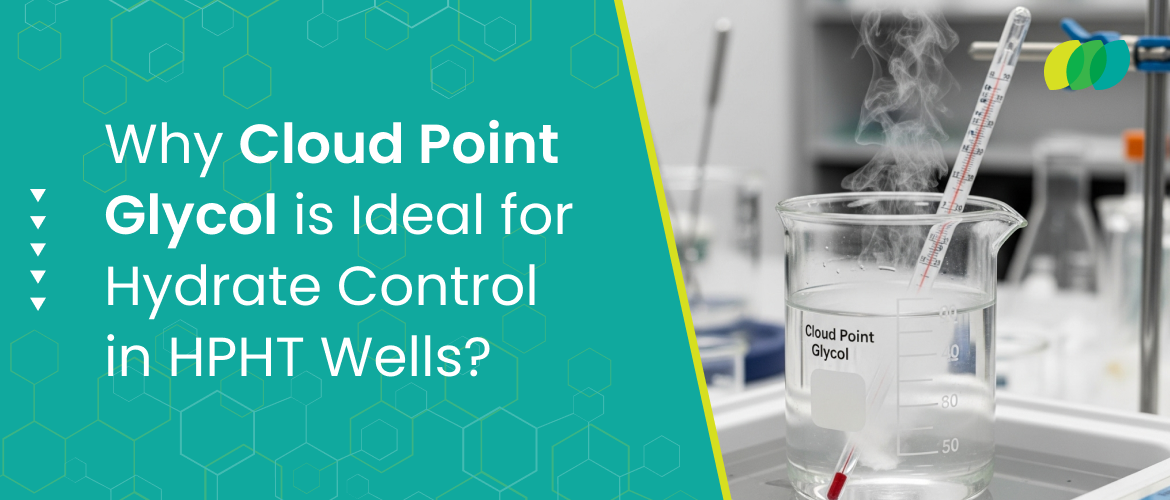Working in high-pressure, high-temperature (HPHT) wells? Then, you know one thing for sure – hydrate formation is not just a possibility. It is a serious risk, and if you do not manage it right, it can bring your entire operation to a halt. That is where Cloud Point Glycol steps in. We will discuss why it is the chemical that you want on your side in such extreme drilling situations.
What are Hydrates?
Hydrates form when gas molecules are surrounded by water under pressure and low temperatures. Not your typical ice, though. These things can plug up pipelines and block flowlines like concrete in a straw.
And when you are drilling deep – especially in HPHT zones – the chance of running into these gas hydrates is high. The temperatures fluctuates. The pressure stays intense. And water is almost always present.
So, how do you stop this mess from forming?
One answer: Cloud Point Glycol
But wait—what does “Cloud Point” mean?
Imagine pouring a liquid into water, and it starts to go cloudy. That point? That is the cloud point—the temperature at which glycol begins to lose its ability to stay dissolved in water. Why does this matter? This matters because it helps you time and control when and how the glycol works. In hydrate control, this timing is everything.
In simple terms, Cloud Point Glycol is a special kind of glycol blend that is designed to be most effective right before hydrate formation begins.
Real-World Benefits of Using Cloud Point Glycol
Here are some real world benefits of Cloud Point Glycol:
Works when others quit
Most standard glycols either evaporate, degrade, or just stop performing well in HPHT settings. But Cloud Point Glycol? It is tailored for the job. It does not quit when the pressure builds. It keeps doing its job – suppressing hydrates-even when things get rough.
It is cost-effective
It doesn’t require constant injection like some alternatives. Because it is optimized for the right temperature zone, you use less of it to do more. So, you won’t need a lot of logistics or storage.
Environmentally safer than traditional alternatives
Not all glycols are created equal. Some leave a footprint you do not want. Cloud Point Glycol is designed with lower toxicity and better biodegradability in mind. That means fewer environmental headaches and smoother compliance with regulations.
Where Exactly Does Cloud Point Glycol Fit In?
Let us say you are operating a deepwater well. The temperatures just above the seabed are only cold enough to allow the formation of hydrates. Your injection fluid must remain stable at the surface, endure transfer across any drop, and remain functional at exactly the point where the hydrates are starting to form.
It is possible thanks to Cloud Point Glycol. It also stays dormant until it is required and then stops just at the hydrate level.
It’s like opening a parachute at just the right height – not too early, not too late.
Why Is It Superior to Methanol?
Yes, Methanol usage is vast. However, there is a twist to this: Methyl alcohol is very flammable. It also stays dormant until needed and activates right at the point of hydrate formation.
With Cloud Point Glycol, you get a safer, more targeted, and less volatile solution.
No extra tanks. No separate systems. No added hazards.
Final Words
Working in HPHT wells is like walking a tightrope. All this must be accurate. Blockages, downtime, and even chemical accidents are not an option with you. And when it comes to hydrate control, choosing the right additive can mean the difference between smooth operations and a full-blown shutdown.
Cloud Point Glycol provides you with an advantage. It does not act at all times. Saves cost. Handles pressure. And it works well with other chemicals in the system.
In short? It performs exactly where it’s needed most.

